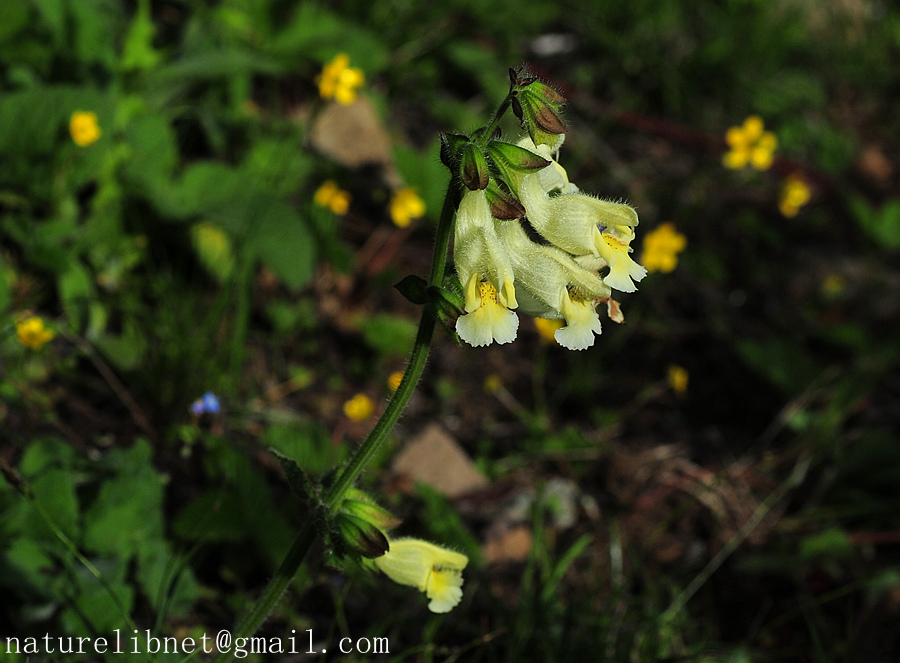- Scientific Name: Salvia mekongensis E. Peter
- Ref: Acta Horti Gothob. 9: 136. 1934.
- Chinese Common Name:湄公鼠尾草 mei gong shu wei cao
- Family: Lamiaceae
- Genus: Salvia
- Distribution:Hilly grasslands; 2800-4100 m. Yunnan.
- Type: Yunnan bor.-occ.: in regione alpina supra jugum Schond-su-la inter fluvios Landsang-djiang(Mekong) et Lu- djiang(Sal-ween), ad tergum Pongatong copiose, calceo, c.4025-4375 m (Handel-Mazzetti 9666, Typus).- Wei-hsi (Forrest 30433).- Fu-tschuan mt. (Mac Laren D144)
Plants perennial. Stems 1-5, ascending to erect, pilose or glabrescent. Stem leaves few; petiole of basal leaves 2-3 × as long as blade, petioles of upper leaves obsolete; leaf blade ovate to oblong-ovate, rarely subcircular or elliptic, 3-9 × 2-8 cm, adaxially appressed villous, abaxially glandular, spreading pilose on veins or densely villous when young, base cordate to shallowly hastate, apex obtuse to rounded. Inflorescences densely villous, glandular hairy; verticillasters 2-flowered, in terminal racemes or panicles 6-10 cm, crowded apically; upper bracts ovate to broadly ovate, villous, glandular. Pedicel ca. 4 mm. Calyx campanulate, 1-1.5 cm, glandular, glandular villous on veins, 2-lipped to more 1/2 its length; upper lip triangular-ovate, apex 3-mucronate; lower teeth narrowly triangular, apex acuminate. Corolla yellow, 3.5-4 cm, glandular pilose; tube imperfectly pilose annulate on basal 5-6 mm inside, ca. 3 × as long as calyx, tubular toward base, adaxially abruptly dilated on exserted part, straight or curved upward, to 1.1 cm at throat; upper lip straight or slightly reflexed, ca. 6 × 6 mm; lower lip slightly longer than upper, middle lobe obcordate, ca. 8 mm wide. Filaments ca. 5 mm; connectives ca. 6 mm, arcuate, arms equal. Nutlets unknown.(Flora of China)
